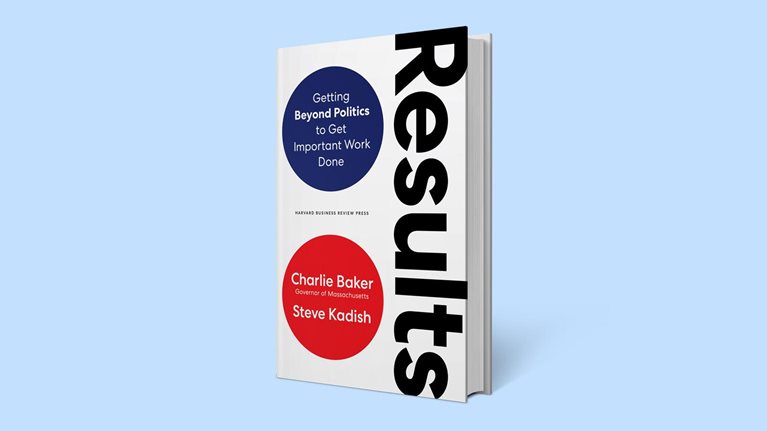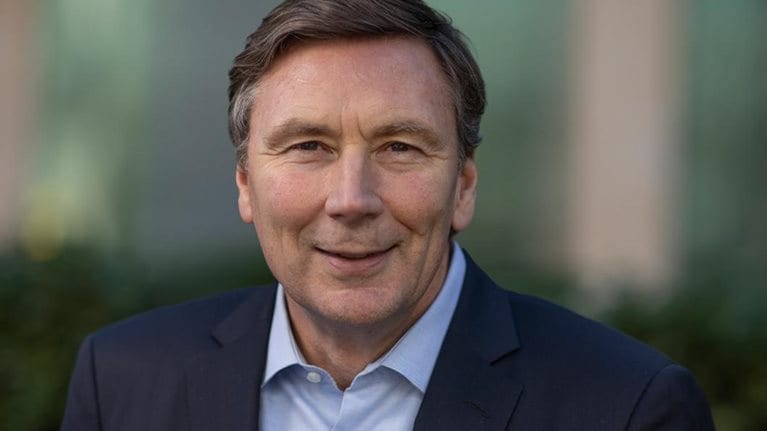Some public-sector leaders seek to make history. Others answer its call. That’s what happened to Judith Persichilli. Back in 2019, the former hospital system CEO had come out of retirement to serve as acting chief executive officer of University Hospital (New Jersey’s only public hospital) when she was tapped to become the state’s top public health official.
Persichilli was confirmed as New Jersey’s commissioner of health on January 9, 2020. The next month, she found herself on the front lines of a rapidly unfolding, once-in-a-century global pandemic.
She recently sat down with McKinsey partner Ellen Feehan to talk about answering the call of public service on the eve of COVID-19, and how she successfully led the state’s public health crisis response by leaning into ambiguity.
This interview has been edited for clarity and length.
Ellen Feehan: Back in early 2019, did you expect to become New Jersey’s health commissioner?
Judith Persichilli: That was something I was not anticipating. But if you look at my career, I went from being an intensive-care nurse making a difference in one person’s life to an administrator that had the opportunity to make a difference for all the patients in the hospital and in the community that we served. So, when I looked at the commissioner of health position, it was an opportunity to make a difference in the lives of everyone in New Jersey.
Ellen Feehan: Fast-forward from that aspiration of being responsible for the public health of 9.2 million people to New Jersey finding itself at the epicenter of the COVID-19 global pandemic. Bring us back to that moment and when you first realized the challenge ahead.
Judith Persichilli: We started keeping an eye on the pandemic in January. We put together a Coronavirus Task Force at the Department of Health, but the pandemic was still miles away. It was in Wuhan, and we thought, “Oh, it’s never going to reach our shores.” And then we heard about the outbreak in Washington State, and we started hearing about sporadic cases.
I was sitting at the state police headquarters, right before one of our press conferences to give an update, and there was a discussion about whether to close the schools. Two-thirds of the schools were already closed at the time, and I remember thinking, “We’ve got a major crisis on our hands, whether it’s real or imagined.” And that’s when I realized that we had to do something really dramatic. We had to be steady. We had to communicate widely and clearly because, obviously, if schools were closing, people were panicking. I never imagined that, in less than four weeks, we would have a real reason to panic.
But as things grew, I remember saying, “We’ve got to overprepare, and we’ve got to get the hospitals to overprepare.” Within a weekend, the number of cases increased exponentially in our hospitals and critical care. And then things happened very quickly. We called in the Army Corps. We put up field medical stations. We put in waivers to increase licensed beds and critical-care beds. We told hospitals, “Put up tents in your parking lots.”
Ellen Feehan: Can you give us an idea of the scale of the challenge you faced and how it unfolded?
Judith Persichilli: The magnitude of what we were facing was unprecedented and complex. Hospitals were starting to see more and more severely ill patients in the emergency rooms. Critical-care units were filling up. Hospitals were overflowing with patients needing care and were expanding their bed capacity, particularly critical care, and changing staffing patterns from conventional to contingency. In some cases, our long-term-care facilities were also battling increases in cases and deaths. The vulnerable populations in our nursing homes were particularly at risk to this novel virus. In addition to capacity constraints, we also had to deal with the scarcity of PPE [personal protective equipment] nationally, and in our state stockpile.
Ellen Feehan: What was your immediate crisis response?
Judith Persichilli: We began a series of actions—we stopped all elective procedures, deployed more staff to hospitals, and commandeered all the ventilators and PPE we could from closed services. We developed real-time capacity and inventory tracking systems and supply chain processes to rapidly deploy staff and supplies. And there were other considerations. Once we had more reliable testing, we realized many of the individuals who tested positive were people experiencing homelessness or unstable housing, so we set up quarantine and isolation units in hotels.
Ellen Feehan: What were the other priorities that you had back then in March–April 2020?
Judith Persichilli: We had to get data. The most difficult to find was, how many cases were there? Where were the outbreaks? Every day, trying to get data was our biggest challenge. So right away we pivoted to, “We need some help. And we need help quickly.”
At the same time, we had no PPE. Our stockpile was empty. The national stockpile was empty. We had no tests. We were running out of space in our hospitals. And it would have been very easy for people to panic. But the governor’s steady hand and those daily press conferences were all about trying to keep us out of crisis and into a cadence of communication.
Behind the scenes, we were scurrying. We were doing everything possible, even calling the White House for ventilators and working with the Office of Emergency Management at the state police, because a public health emergency was called. The Department of Health worked together with the state police to make sure that everybody got the care that they had to get.
It definitely tested everything I ever learned about leadership, and really caused me to think long and hard about the whole concept of leadership during a crisis and ambiguity, during the worst situation you can have. For any leader, crisis and ambiguity is the most difficult situation to lead through.
Ellen Feehan: And what lessons did you learn about leadership, both through COVID-19 and throughout your career?
Judith Persichilli: At the end of the day, everybody gets an opportunity to choose what kind of leader they want to be. Through the years—through study, trial and error, and seeing what’s worked and what doesn’t, I’ve always leaned toward service leadership—to serve rather than be served. It’s a combination of transactional and transformational leadership.
During the pandemic, I had to be very transactional at times: “I’ll give you an incentive if you get more people vaccinated.” But you want to be careful that it doesn’t become your leadership style, so I would then go to transformational—“We’re all in this together”—focusing more on our mission, which is to make sure that New Jerseyans live long, healthy lives and reach their highest potential and fulfill that mission in an equitable way. We could not be defined just by COVID-19, because it [would end]. You want to be defined by your mission. You need to really hold onto your mission. It’s your reason to exist.
You need to really hold onto your mission. It’s your reason to exist.
Then there’s your vision, which is how you’re going to get there. We set a goal of vaccinating 70 percent of the eligible adult population [against COVID-19] within six months. You don’t get there by accident. You get there by your values. And it was a combination of mission, vision, and values that kept me steady and held the team together.
Ellen Feehan: New Jersey was one of few states at that time to set a vaccination target. How did that come about?
Judith Persichilli: Measurement outcomes are really a way of life for any leader. It can’t be the driving force because the driving force has to be mission. But you’re not going to get there unless you can measure something. And I know there are a lot of people within the department that thought I had lost my mind by setting that target so high.
I remember sitting in a room and going over the numbers, and asking: “Well, how many would we have to vaccinate a day? How many would we have to vaccinate a month?” It went on and on. But the bottom line is, people were dying. So, if we weren’t bold, shame on us.
There was a good possibility we would not make that mark. But if we didn’t try, we never would have made it. And we did. We exceeded it, actually. We did vaccinate 70 percent of the eligible adult population in less than six months. But we didn’t do it without a lot of struggle, a lot of teamwork, and a lot of everyone doing a lot of things we had never done before.
Ellen Feehan: And that goes back to the ambiguity and the crisis?
Judith Persichilli: Leading through ambiguity is the most difficult thing any leader can confront. And many leaders never confront that in their careers. They never have to because most situations can be very static for leaders. But ambiguity and not necessarily knowing where you’re going to end up and how you’re going to measure success is pretty difficult.
Leading through ambiguity is the most difficult thing any leader can confront.
Our mission is to help New Jerseyans live long, healthy lives. That’s why we set aggressive targets, and we didn’t stop doing it. To this day, we haven’t stopped doing it.
Ellen Feehan: It takes big, broad shoulders to set an ambitious target in deeply ambiguous circumstances. When you lean into ambiguity—is that a gut instinct, or is there a tool kit that you’re accessing to help you determine when to do that?
Judith Persichilli: I’ve worked a long time, and I’ve had the benefit and opportunity to be in a lot of leadership positions. You get a gut feeling that something’s going to happen.
It’s the sixth sense. It’s like, “Hmm, I see trouble.” And I have to honestly say, when I got the [hospital] CEOs on a call and waived all of their licensed bed capacities and said, “Have at it,” I knew that they were like, “She’s got to be kidding.” Because at that point, it was three weeks before we had a big surge in cases. Before that, I had told them, “Empty out your step-down units and make them critical-care units,” because they’re monitored units. If we hadn’t done that, we would not have been able to handle that weekend we had 2,300 to 2,400 critical patients.
So, you kind of get that gut feeling, that “Why not, let’s go for it. It’s a war. Let’s just see what we can do.” On the other hand, you also think, “What’s the risk?” Every day, leaders have to look at the risk–benefit of the decisions they make. And you have to be willing to take the risk.
It’s also important to have the team willing to take the risk and do the work. Our team was working 24/7. The key leaders at the Department of Health were in the office from March 4 to May 30, 2020, every single day from 7:00 a.m. to midnight. We set up a war room, we worked together, we sang together, we celebrated small victories together, and we cried together during the tough times. We were a team—and we formed a bond similar to the bond my father had with his buddies from World War II. These are individuals we will never forget. Every day, I had a choice, as a leader, on how I was going to show up. The leader sets the tone. I had to be confident yet inquisitive, at times stern but open to jest, and calm even when on edge. But through it all, to keep the team intact I had to lead with our values. We never lost sight of our mission and every day held the vision of a future much better than the present we were living in.
We set up a war room, we worked together, we sang together, we celebrated small victories together, and we cried together during the tough times.
Ellen Feehan: What advice would you have for emerging leaders who may be excited about public health or public office or who want to become leaders in any part of any organization?
Judith Persichilli: I’ve given talks on leadership, and I always like to say, “Take your jobs and your responsibilities very seriously, but don’t take yourselves too seriously.” Because you can get so focused on outcomes and success that you forget that there’s one thing that all leaders have in common. And that is followers. If you have no one following you, then you’re not a leader. But if you do have people following you, you’ll have the opportunity to determine what kind of leader you want to be. And it’s both an art and a science, and it requires study. Because you do have choices in leadership. You’re not born leaders. There are some people that are born very charismatic, but that doesn’t necessarily make them successful leaders. Sometimes you’re defined by what you don’t do, rather than what you do do. So decide what kind of leader you want to be, and understand that you are serving people. And to do that, you need to make sure you value your followers. Because what you’re really doing in transformational leadership is making sure that all followers are leaders as well.
Ellen Feehan: How did you empower your followers to be leaders during the pandemic?
Judith Persichilli: The first way to recognize leaders is to get to know the people. Don’t separate yourself out. Find out something about them: “Who are you? How long have you worked here? Tell me a little bit about your life. Where do you live? Do you have any kids? What’s important to you?” And what’s important to them will tell you where they’re going to go in terms of their careers and leadership. Don’t ever hesitate to stop and learn about people. Leaders owe that to the people that they’re leading. They’re not robots. They’re people with full lives and aspirations and things they want to accomplish personally and professionally. And our job is to help them do that, no matter what it is.
It didn’t take me very long to look around and to realize who the leaders were, and if they could be tapped, that I could guarantee that they would succeed. As a leader, we needed every skill set, every subject-matter expert, and every talent available. In some cases, those individuals were obvious. But in a lot of cases, they were hidden colleagues within the department. These were individuals that, in the beginning, sat in the corner with their laptops and didn’t say a word. And I thought, “There’s something there that we need to tap, and how do you do it? What is the skill set that particular individual has that just needs to come out and shine?”
Finding the “stars,” and there were many, was the most gratifying part of this journey. Individuals who, if not for the pandemic, would have continued being committed public servants but perhaps would not have fully realized their potential. Allowing individuals to be open, included, and recognized has become the “New DOH” [Department of Health]—a team that works together seamlessly with one another, sharing their expertise and building their own leadership style.
I would have to say, that would be my best legacy. The Department of Health is stronger and more resilient as a result of this once-in-a-century pandemic. As we recover, it is our commitment to use all of what we have learned to continue in our mission to help all New Jerseyans live long, healthy lives.
McKinsey has supported the state of New Jersey during Judith Persichilli’s time in office on topics including its COVID-19 response and setting up a centralized data and analytics hub to support the state’s data-driven response across all aspects of public health.


